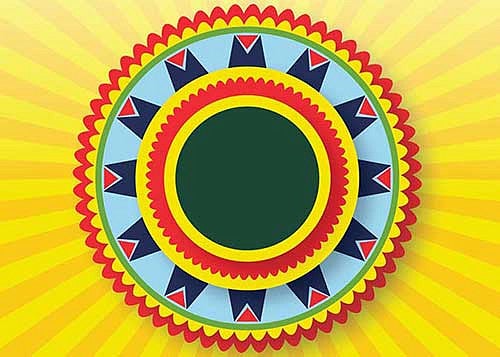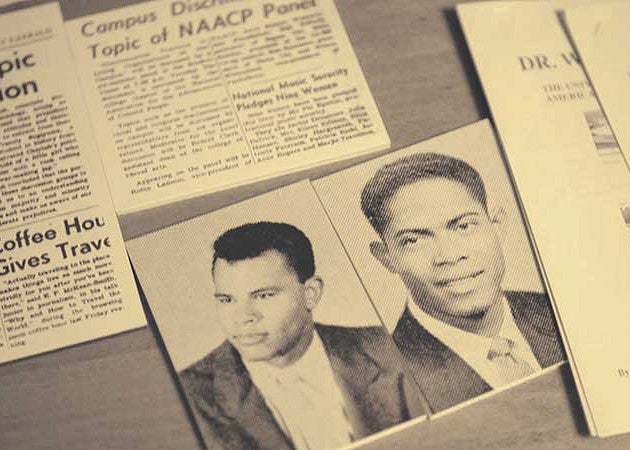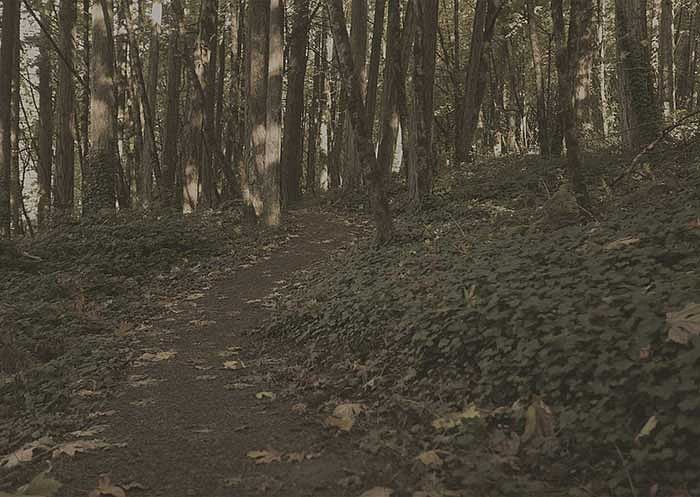
Why October? It includes National Coming Out Day on October 11 and the anniversary of the first LGBT March on Washington on October 14, 1979.
Here at the University of Oregon, it’s a time to celebrate the long history of LGBTQIA+ activism and community building on campus.
At the UO, the first official Standing Committee on Lesbian, Gay, Bisexual and Transgender Concerns was founded in 1992, and the first position specifically dedicated to supporting LGBTQIA+ students was established in 1993, partially funded through the ASUO. However, as detailed in “Creating Change,” the struggles of queer people to achieve full equity and inclusion on campus had already been going on for decades—and continue to the present day.
As graduate student Tzula Propp explains in their story, being queer at the UO is a different experience for each person. This month and every month, there are as many LGBTQIA+ stories as there are LGBTQIA+ people. Any time can be a good time to share them, or to listen.
Coming out is not often one moment (or even one day) in a LGBTQIA+ person’s life—rather, it is a lifelong process of negotiating safety, openness, and vulnerability with ourselves, our loved ones, friends and colleagues, casual acquaintances, and complete strangers.
Not everyone has the privilege or desire to come out, and coming out is a personal decision in every moment for a LGBTQIA+ person.
Being queer at the University of Oregon means many things: It means building networks of queer community and support. It means creating the resources you wish you had access to. It means looking forward to volunteering at events like LGBTSTEM Day and Coming Out Day because you can connect with the UO queer community.
It means working hard to protect access to basic needs like health care and housing. It means mentoring non-binary undergraduates and helping them apply to grad school. It means accountability, and so, so much unlearning.
It means seeing an older grad student come out, and deciding that if she can do it, so can you. It means meeting Judith Raiskin and witnessing what it means to be a flourishing queer professor, supporting her community. It means Haley Wilson in LGBTESS holding your hand as you submit your name change form.
It means seeing, after two years of begging, that sweet, sweet gender-neutral bathroom installed in your building. It’s watching students walk with their chosen families at Lavender Graduation. It means going home after work and crying with happiness after your PhD advisor asks your pronouns. (It means a lot of crying, one way or another.)
But being queer at the University of Oregon also means being told by a theoretical particle physicist (!) that they/them pronouns are just too hard! It means seeing Oregon pride itself as the No. 1 most LGBT+ friendly institution and feeling like a human pronoun pin. Sometimes, it means being called a slur or two on the way home.
Being queer at the University of Oregon means something different to each person. What’s your story? Have you asked your friends, classmates, students, and coworkers about their experiences here? Listen to them. Believe them. Listen.
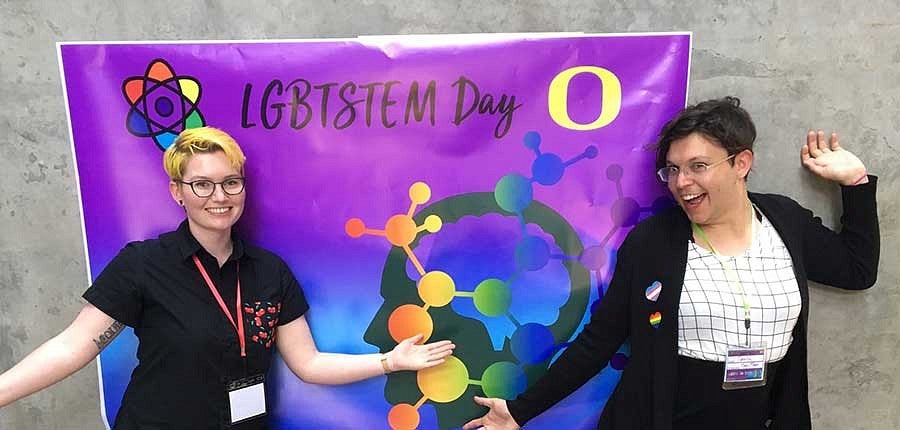
The LGBT Education and Support Services team works to affirm the lives of lesbian, gay, bisexual, transgender, queer, questioning, asexual, aromantic, and allied (LGBTQIA+) students, faculty, and staff by providing educational and supportive resources. Our campus has been recognized as the top college in Oregon for LGBTQ students by the Campus Pride Index.
We are dedicated to providing space for all University of Oregon community members to explore their understanding of sexual/romantic orientation, gender, gender expression, and intersections of identities. We look forward to being in community with you.
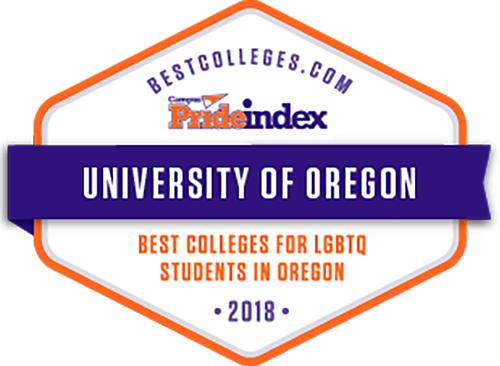
40 Years of LGBTQ Activism at the UO
In recent years, the University of Oregon has been recognized as one of the Top 25 LGBT-friendly campuses in the United States and named as one of the Top 10 Trans-friendly Colleges and Universities in the nation.
However, this recognition did not come easily. It is the result of more than four decades’ grassroots activism by LGBTQ students, members of the faculty and staff, and community allies.
In 2012, to mark the twentieth anniversary of the university’s inaugural Standing Committee on Lesbian, Gay, Bisexual, Transgender (LGBT) Concerns, UO Libraries’ Curator of Manuscripts Linda Long produced “Creating Change.”
This exhibition debuted at the Eugene Airport. Following its very positive reception, Long created a digital version of the exhibit to promote in perpetuity “heightened awareness of the richness of LGBTQ life on the UO campus and the significance of the groundbreaking advances made to improve the campus climate for LGBT students, faculty, and staff.”
Highlights of the site include a timeline of key events in the long struggle for LGBTQ recognition and rights at the UO, historic art and ephemera, and a brief history of Gay Blue Jeans Day. Profiles of LGBTQ student leaders include Randy Shilts, who would later attain national prominence as a journalist reporting on the AIDS epidemic, and former ASUO President Lynne Pinckney, by all accounts the first openly gay person to be elected student body president at any university in the US. (The year was 1985.)
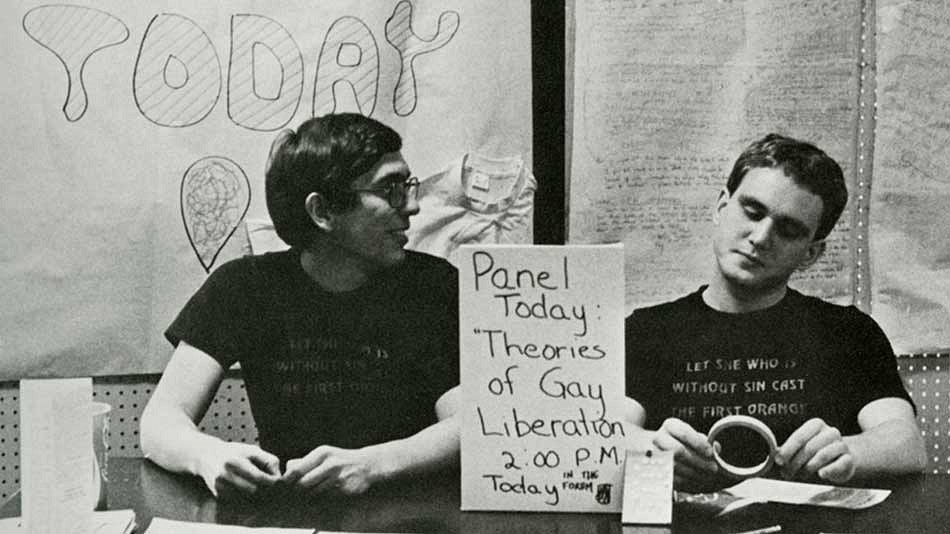
“Digitization of Just Out will provide the public with free online access to a key resource for understanding Oregon’s LGBTQ history. As the repository of the Gay and Lesbian Archives of the Pacific Northwest, we see a growing interest in LGBTQ history and are grateful for the University of Oregon’s efforts to share this publication with all Oregonians.”
—Shawna Gandy, Library Director, Oregon Historical Society
LGBTQIA+ Resources
UO Resources
Queer Studies Courses
Find Your Community


